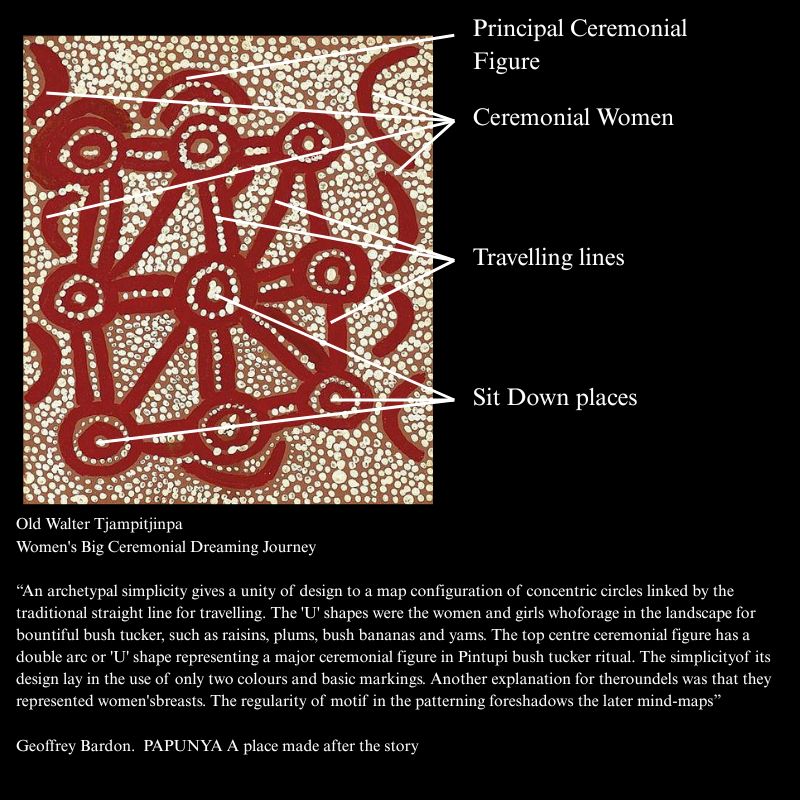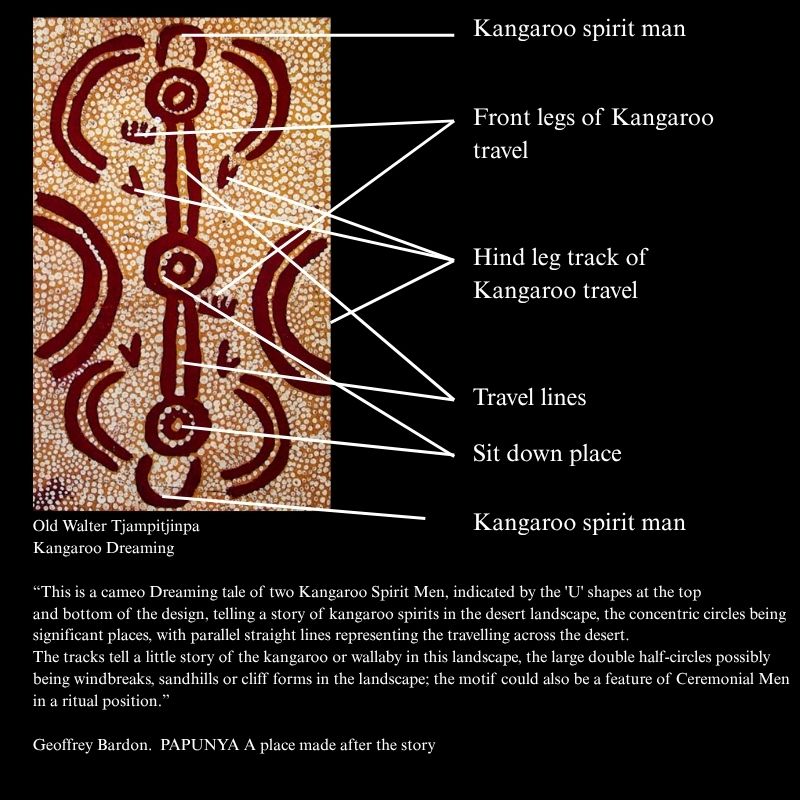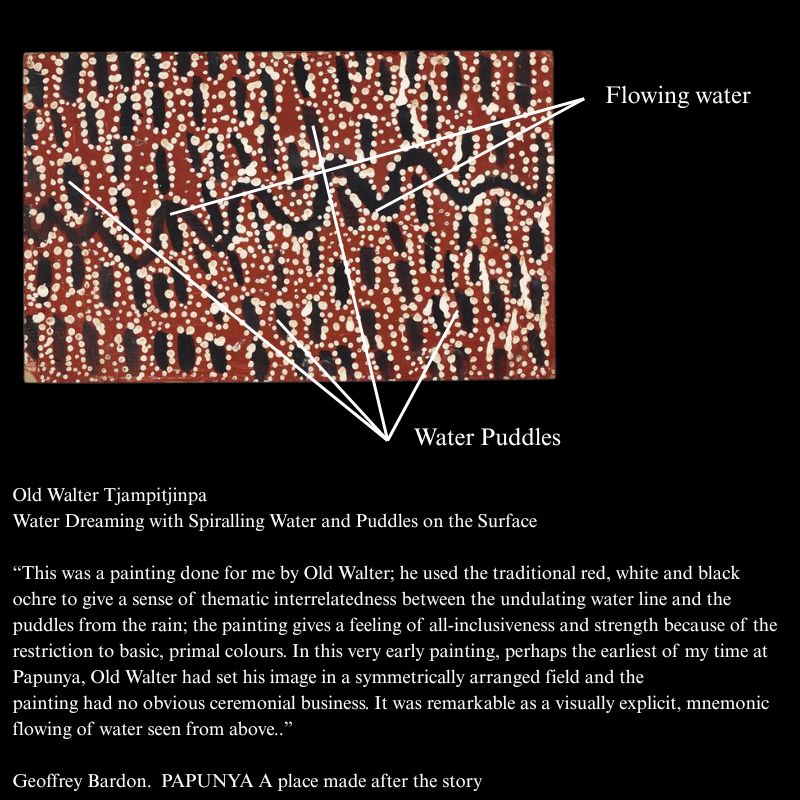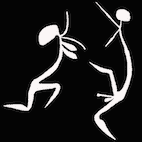Old Walter Tjampitjinpa
If you wish to research past sales of this artist please read: Old Walter Tjampitjinpa Artworks and values
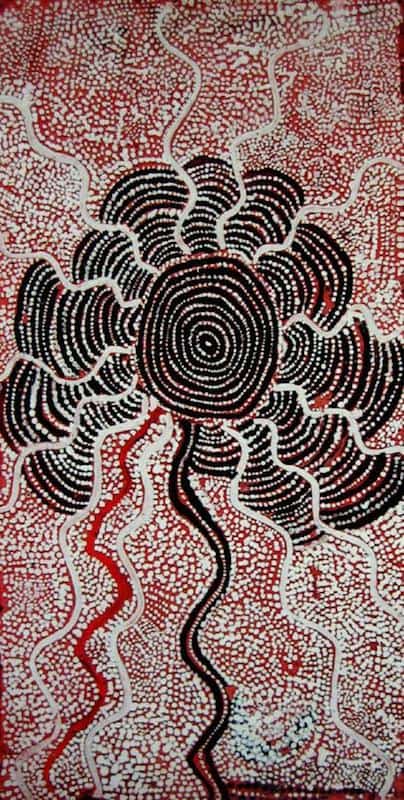
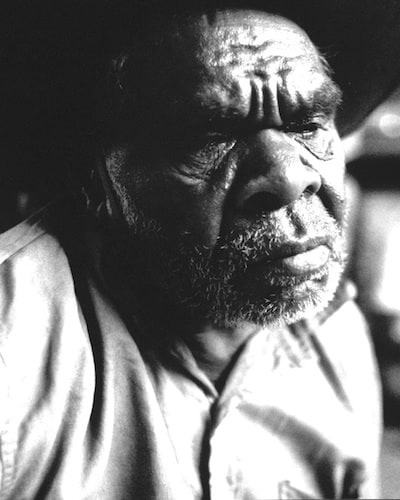
Old Walter Tjampitjinpa Early Life
Old Walter Tjampitjinpa was born around 1910 and lived a traditional nomadic hunter-gatherer lifestyle for much of his life. He was fully initiated and knew the secret and sacred stories of the central desert.
He was the senior custodian of the Kalipinya water dreaming which he shared with Johnny Warangkula and Long Jack.
When in his 50s he and his family moved to the Papunya settlement.
Papunya Mural
In 1971 Geoff Bardon became a local school teacher at Papunya Primary. He had been unsuccessful in trying to encourage the school children to paint their traditional patterns. He had seen them drawing these patterns in the playground sand but they would not draw them on paper
When he realized only older men could draw these designs he came up with the idea of a mural.
He had to receive permission for a design by the tribal elders. It was Old Walter Tjampitjinpa and Mick Tjakamarra who gave permission to use the honey ant dreaming.
The mural of the honey ant dreaming was painted by Kaapa, Long Jack and Billy and it caused quite a stir in the small community. The honey ant dreaming was a story common to all the different tribes gathered in Papunya and proved an overwhelming success.
This murals success inspired Bardon to start a men’s painting group. Old Walter was the pensioner of the group. He had great knowledge of traditional designs and aboriginal art meanings. He was an acknowledged ceremonial leader and always maintaining a strong tribal interest.
.
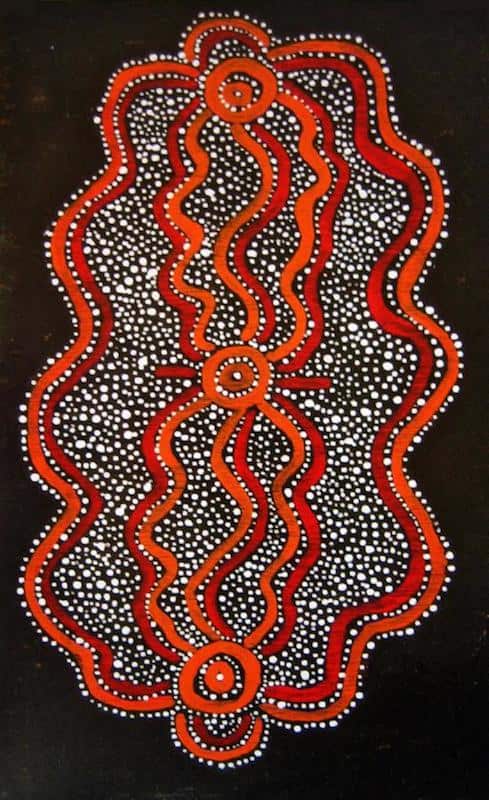
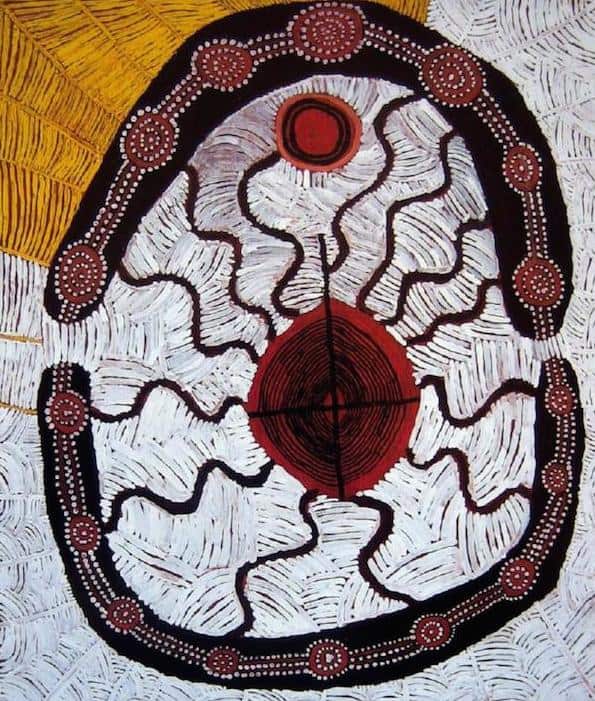
Old Walter Tjampitjinpa The Elder Painter
Old Walter Tjampitjinpa hands may not have been as steady as younger artists but his designs had strength. He liked to use the muted natural tones of his desert homelands landscape.
Many of his best works were between 1971 and 1974. They are often simple but have great clarity. He was amongst the first to paint the ‘U’ sign for humans, concentric circles for rock holes and wavy lines for water flow.
Old Walter was a senior custodian of Water Dreamings that run through Kalipinypa in the western desert. Most of his Aboriginal Dot Art paintings are of water dreamings and the celebration of its life-giving force. The Kalipinya Water dreaming site was also an important site and focus for paintings Long Jack and Johnny Warangkula.
Later Life
Old Walter did not live long enough to see the desert painting movement grow to its full strength. His painting career ended around 1976 due to health problems. He did not paint quickly or for very long so the number of his paintings are quite limited.
Old Walter died in 1981. He was a seminal figure amongst those who helped set in motion the western desert movement. He was a quiet respected senior statesman and reservoir of traditional knowledge
His paintings appear in Australia’s state and national galleries. He made an important contribution to our understanding of the symbology of aboriginal art.
Old Walter Tjampitjinpa skin name has variations so he is sometimes called Old Walter Jampijinba or Old Walter Djambidjinba.
He is also sometimes referred to as Old Walter Tulpulpa, Old Walter Talpulpa or Old Walter Talpana.
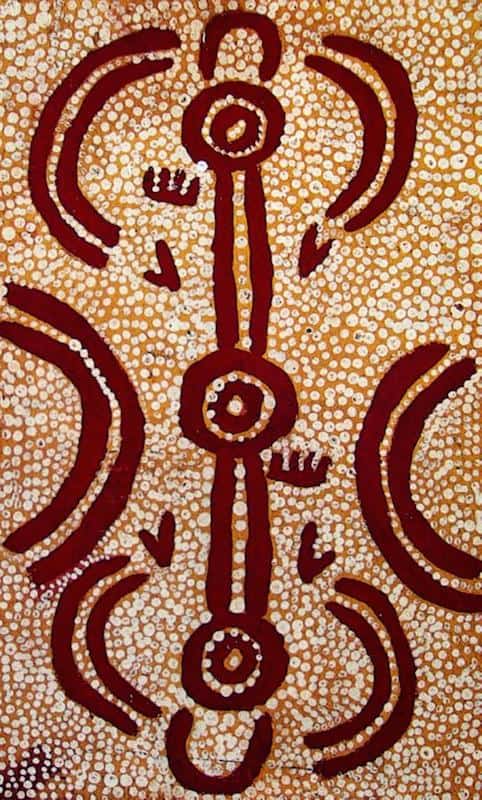
All images in this article are for educational purposes only.
This site may contain copyrighted material the use of which was not specified by the copyright owner.
Old Walter Tjampitjinpa Artworks explained
